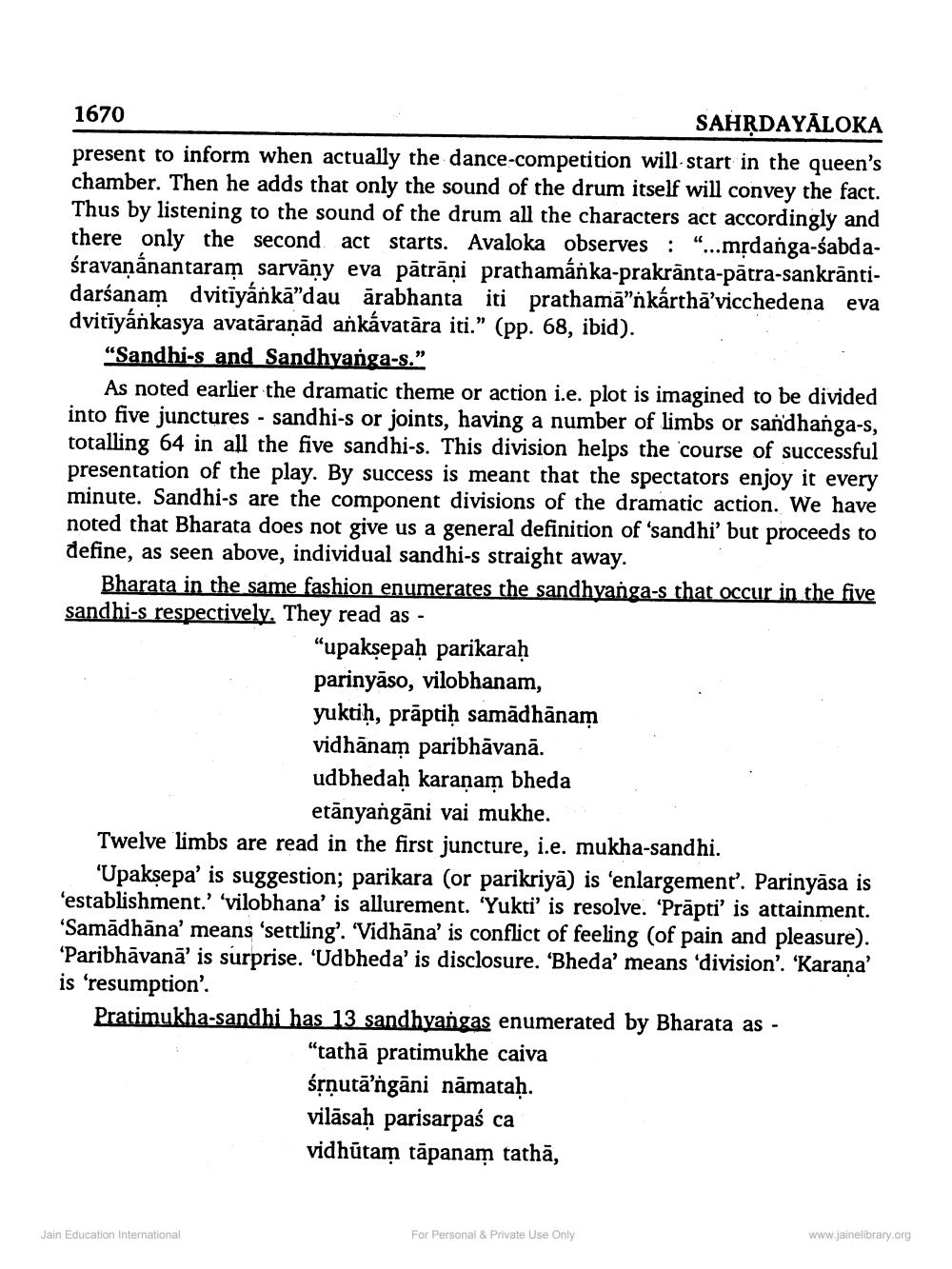________________
1670
SAHRDAYĀLOKA present to inform when actually the dance-competition will start in the queen's chamber. Then he adds that only the sound of the drum itself will convey the fact. Thus by listening to the sound of the drum all the characters act accordingly and there only the second act starts. Avaloka observes : "...mpdanga-śabdaśravaņánantaram sarvāny eva pātrāņi prathamánka-prakrānta-pātra-sankrantidarśanam dvitīyánkā”dau ārabhanta iti prathamā”nkárthā’vicchedena eva dvitīyánkasya avatāraņād ankávatāra iti.” (pp. 68, ibid).
“Sandhi-s and Sandhyanga-s."
As noted earlier the dramatic theme or action i.e. plot is imagined to be divided into five junctures - sandhi-s or joints, having a number of limbs or sandhanga-s, totalling 64 in all the five sandhi-s. This division helps the course of successful presentation of the play. By success is meant that the spectators enjoy it every minute. Sandhi-s are the component divisions of the dramatic action. We have noted that Bharata does not give us a general definition of 'sandhi' but proceeds to define, as seen above, individual sandhi-s straight away.
Bharata in the same fashion enumerates the sandhyanga-s that occur in the five sandhi-s respectively. They read as -
“upakṣepaḥ parikaraḥ parinyāso, vilobhanam, yuktih, prāptih samadhānam vidhānam paribhāvanā. udbhedaḥ karanam bheda
etānyangāni vai mukhe. Twelve limbs are read in the first juncture, i.e. mukha-sandhi.
'Upaksepa' is suggestion; parikara (or parikriyā) is 'enlargement'. Parinyāsa is 'establishment.' 'vilobhana' is allurement. 'Yukti' is resolve. ‘Prāpti' is attainment. 'Samādhāna' means 'settling'. 'Vidhāna' is conflict of feeling (of pain and pleasure). 'Paribhāvanā' is surprise. 'Udbheda' is disclosure. 'Bheda' means 'division'. 'Karana' is ‘resumption. Pratimukha-sandhi has 13 sandhyangas enumerated by Bharata as -
"tathā pratimukhe caiva śrnutā’ngāni nāmataḥ. vilāsaḥ parisarpaś ca vidhūtam tāpanam tathā,
Jain Education International
www.jainelibrary.org
For Personal & Private Use Only




